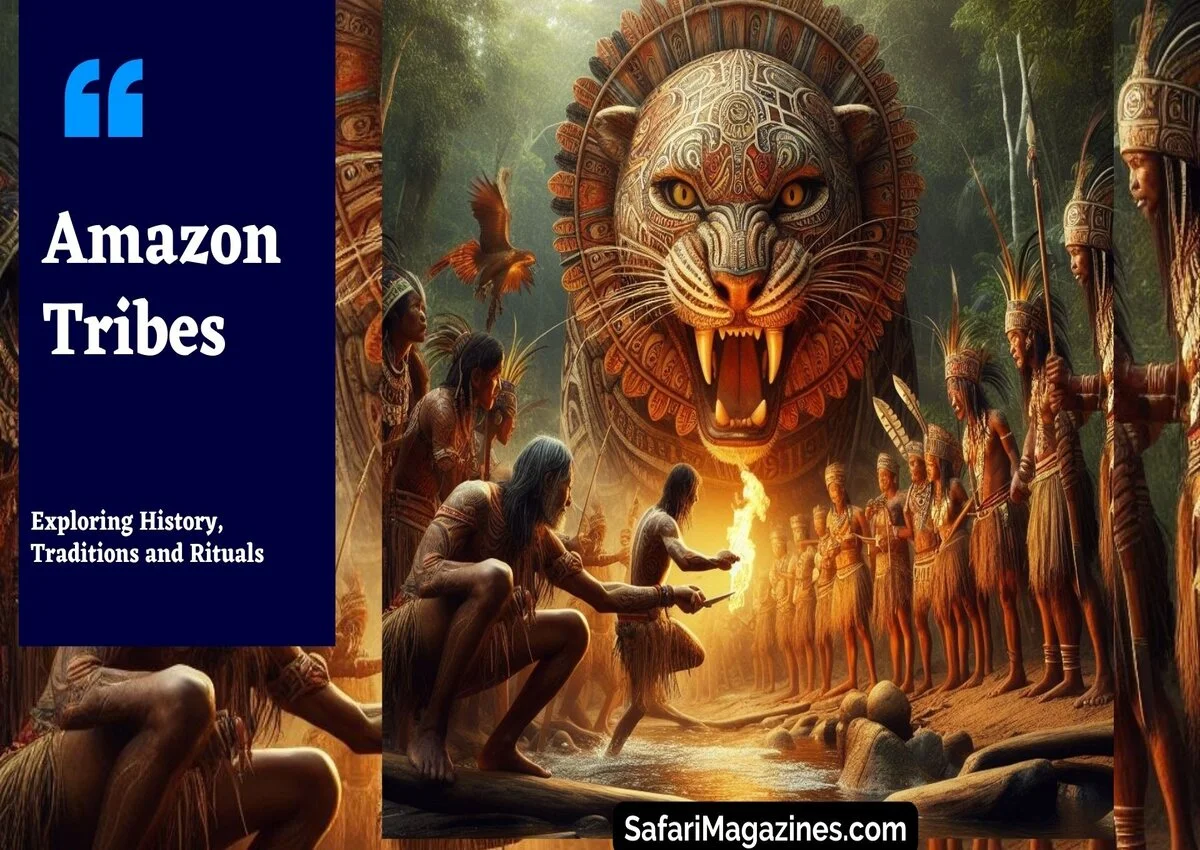
Amazon Tribes, Exploring History, Traditions and Rituals. In the heart of the Amazon rainforest, where the symphony of nature plays its mesmerizing tunes, a tapestry of ancient cultures thrives—the Amazon tribes. Also the Amazon rainforest is home to an Amazing collection of biodiversity. The Amazon rainforest is not only a attracted area for environmental wonders but is also a hidden cultural treasure. The tribes that call this lush environment home have unique traditions that provide a window into the rich tapestry of human civilization. The Amazon rainforest, often referred to as the “lungs of the Earth,” is not just a biodiverse hotspot but also home to numerous indigenous tribes with rich cultural heritage. In this article, we will explore the amazing world of Amazon tribes especially their traditions, customs and rituals. uncovering the amazing tapestry that defines their way of life.
Table of Contents
ToggleHistorical Background

Origin and Migration Patterns
Amazon tribes have a deep-rooted history, with diverse origins and migration patterns shaping their unique identities. So, understanding these historical roots provides insights into their resilience and adaptation over centuries.
Interaction with the Outside World
The arrival of outsiders, including explorers and colonizers, had a profound impact on Amazon tribes. This section examines the historical encounters that shaped their interaction with the outside world.
Impact of Colonization
Colonization brought about significant challenges, including cultural disruptions, diseases, and territorial conflicts. That is, examining the consequences of colonization is crucial to understanding the present realities faced by Amazon tribes.
Cultural Diversity
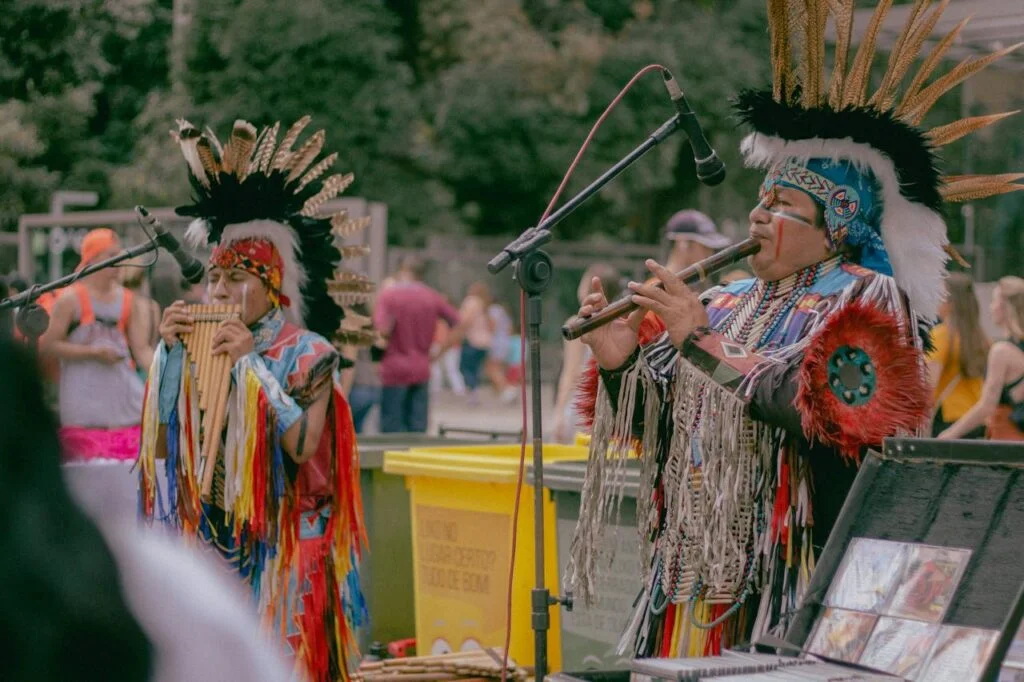
Overview of Various Amazon Tribes
The Amazon is a mosaic of diverse tribes, each with its own language, customs, traditions, social structures and way of life. So, From the Yanomami to the Kayapo, the cultural richness found within these tribes is astounding. Here, we profile a variety of tribes that call the rainforest home.
Unique Customs and Traditions
From intricate body paintings to elaborate ceremonies, Amazon tribes boast a rich tapestry of customs and traditions. This section explores some of the unique practices that define their cultural identity.
Social Structures
Social structures within Amazon tribes are intricate and fascinating. So, from communal living arrangements to unique customs surrounding marriage, family, and community life, these tribes offer a glimpse into alternative societal models.
Rituals and Ceremonies: The Dance of Spirits
Rituals and ceremonies not only play a central role in Amazonian tribal life but also define their identity. Embark on a mystical journey through the spiritual world of Amazonian tribes. Rituals that filled with ancient wisdom are connect these communities to the unseen forces of nature. Witness the ethereal dance of shamans, invoking spirits to guide and protect their tribes, creating a deep tapestry of spirituality. Therefore, rituals and ceremonies calls the beating heart of Amazonian culture. Whether celebrating harvests, honoring spirits, or marking significant life events, these ceremonies and rituals are deeply rooted in the tribal way of life, and at the same time are deeply intertwined with their worldview and beliefs.
Daily Life
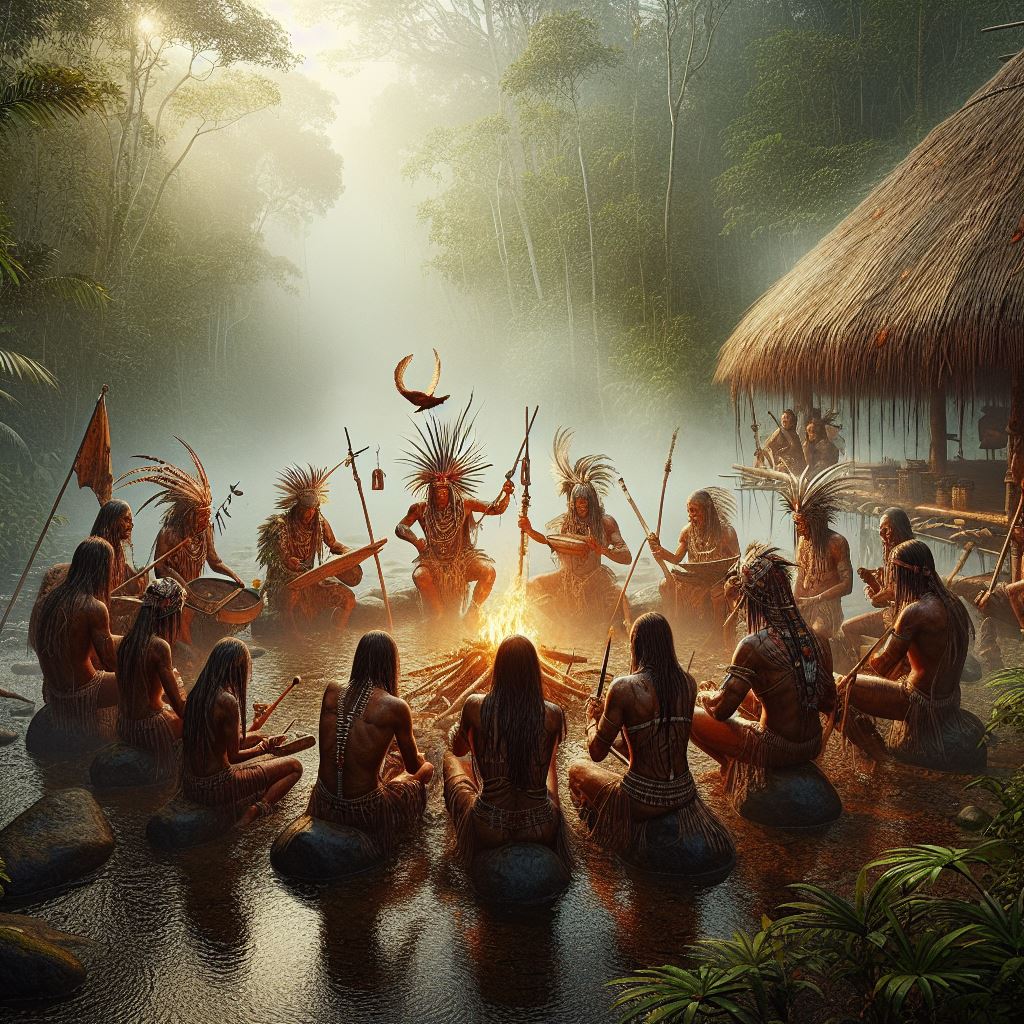
Hunting and Gathering Practices
Amazon tribes have perfected sustainable living through hunting and gathering. That is, understanding their traditional methods sheds light on their harmonious relationship with the environment.
Sustainable Living in the Amazon
In the face of modern challenges, many Amazon tribes practice sustainable lifestyle, in harmony with the environment, that ensures the longevity of their communities and surrounding ecosystems. For that reason, their eco-friendly practices are examples of how humans can live without causing any harm or damage to nature.
Cultural Artifacts and Clothing
The attire and artifacts of Amazon tribes are not just practical but carry profound cultural significance. Each piece of clothing and every artifact tells a story, representing a connection to the tribe’s history and beliefs.
Connection to Nature
Nature is not just a backdrop but an integral part of Amazonian tribal life. This section explores the spiritual connection tribes have with the rainforest and its inhabitants.
Traditional Practices
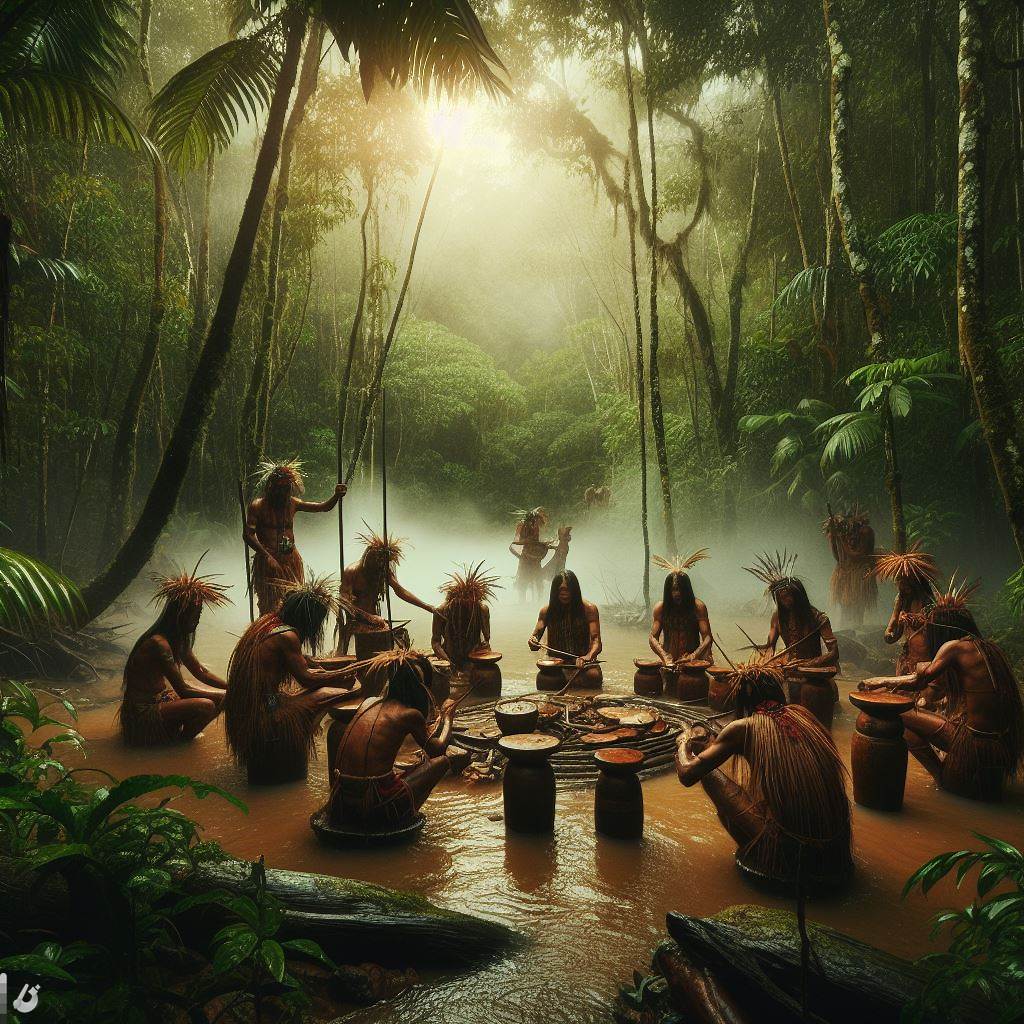
Healing Rituals and Herbal Medicine
Amazon tribes possess profound knowledge of medicinal plants. For that reason, examining their healing rituals and herbal medicine showcases the sophisticated healthcare systems developed over generations.
Spiritual Ceremonies and Their Importance
Spirituality permeates every aspect of tribal life. Unraveling the significance of spiritual ceremonies provides insights into their worldview and relationship with the divine.
Artistic Expressions and Craftsmanship
From intricate handwoven baskets to vibrant textiles, Amazon tribes are skilled artisans. This section delves into the artistic expressions that showcase their craftsmanship.
Curiosities About Amazon Tribes
Beyond the commonly known aspects, Amazon tribes hold numerous curiosities. So, from unique customs to fascinating stories, there’s much more to discover about these extraordinary communities.
The Role of Shamanism
Shamanism is deeply rooted in the spiritual practices of Amazon tribes. That is, shamans act as a link between the human world and the spirit world, and play a vital role in the well-being of the tribe.
Challenges Faced

Impact of Deforestation
The rapid pace of deforestation poses a severe threat to Amazonian tribes. Understanding the challenges they face due to environmental degradation is crucial for informed conservation efforts.
Challenges and Changes: Preservation of Cultural Heritage
While traditions persist, Amazon tribes face modern challenges. Globalization and environmental issues pose threats, requiring tribes to adapt while striving to preserve their cultural heritage. This section discusses the efforts needed to safeguard the traditions and customs of Amazon tribes.
Impact of Western Influence : Modern Influences on Traditional Practices
Western influence has permeated the Amazon, bringing both opportunities and challenges. The influx of modern influences can erode traditional practices. Examining the delicate balance between embracing change and preserving tradition is essential. And this is a constant struggle for these tribes.
Continue Reading: Amazon Tribes: Exploring History, Traditions and Rituals
Cultural Exchange
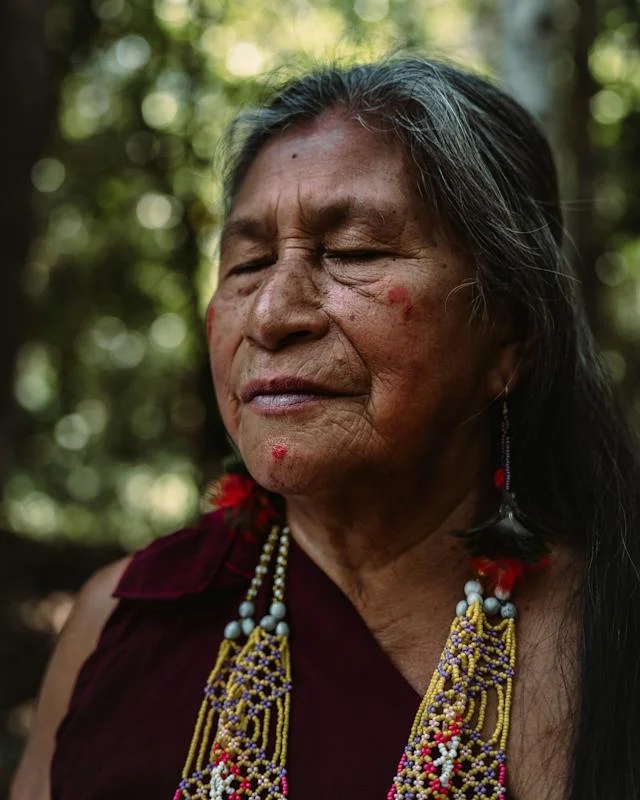
Interactions with the Modern World
Amazon tribes are not isolated entities. This section explores their interactions with the modern world, for example trade, technology, and cultural exchange.
Balancing Tradition and Adaptation
As the world evolves, tribes face the challenge of balancing tradition with adaptation. Finding a middle ground that allows for cultural preservation while embracing positive change is explored here.
The Role of Education in Preserving Culture
Education plays a vital role in transmitting cultural knowledge to younger generations. This section highlights the significance of education in preserving the identity of Amazonian tribes.
Sustainable Initiatives
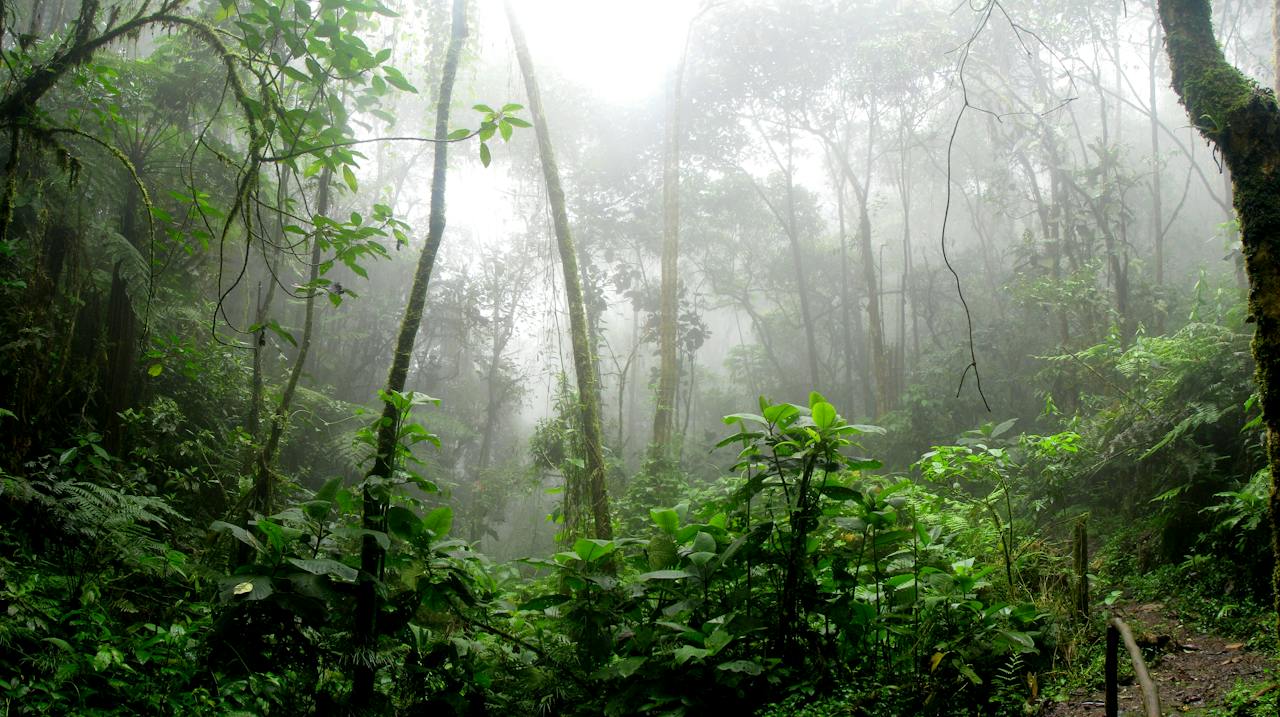
Indigenous-Led Conservation Efforts
Many tribes actively engage in conservation efforts. So, this section highlights indigenous-led initiatives aimed at protecting the Amazon rainforest and its biodiversity.
Partnerships with Environmental Organizations
Collaborations between tribes and environmental organizations are crucial for total conservation. That is, examining successful partnerships provides insights into effective strategies.
Global Awareness and Support
Raising global awareness is vital for garnering support for Amazonian tribes. So, This section explores the role of international initiatives in supporting the preservation of tribal cultures.
Continue Reading: Amazon Tribes: Exploring History, Traditions and Rituals
Cultural Sensitivity

Importance of Respecting Tribal Cultures
Respecting the autonomy and uniqueness of each tribe is fundamental. This section emphasizes the importance of cultural sensitivity in interactions with Amazonian tribes.
Importance of Preserving Traditions
Preserving the traditions of Amazonian tribes is crucial. So that, it ensures the survival of unique cultural practices, enhancing a sense of identity and continuity for future generations.
Addressing Stereotypes and Misconceptions
Common stereotypes can perpetuate misconceptions. This part challenges preconceived notions and encourages a nuanced understanding of Amazonian tribal cultures.
Documenting and Studying Amazon Tribes
Anthropologists and researchers play a vital role in documenting Amazonian cultures. However, ethical considerations must be forefront, ensuring respect for the tribes’ autonomy and cultural sensitivity.
Promoting Responsible Tourism
Tourism can either be a force for good or harm. This section advocates for responsible tourism practices that contribute positively to the well-being of Amazonian tribes.
A Symphony of Voices: Preserving Amazonian Languages
Languages spoken by Amazon tribes are like ancient melodies, preserving the essence of their identity. Delve into the linguistic diversity, as each tribe contributes a unique note to the harmonious symphony of the Amazon rainforest.
Uncontacted Tribes
In the depths of the rainforest, uncontacted tribes remain a mystery. that is, respecting their isolation is paramount, acknowledging the importance of allowing them to live undisturbed.
Continue Reading: Amazon Tribes: Exploring History, Traditions and Rituals
Future Outlook

The Resilience of Amazon Tribes
Despite challenges, Amazonian tribes showcase remarkable resilience. This section explores instances of triumph over adversity and the strength that propels them into the future.
The Importance of Continued Cultural Preservation
As the world changes, the preservation of Amazonian cultures becomes paramount. This part discusses the ongoing efforts needed to ensure the continuity of these vibrant traditions.
Potential Positive Changes
Examining potential positive changes offers hope for the future. This section explores avenues for positive transformation in the lives of Amazonian tribes.
In the Footsteps of Giants: The Future of Amazon Tribes
As we peer into the future, the fate of Amazon tribes hangs in the balance. As we look to the future, the fate of the Amazon tribes hangs in the balance. What role does the modern world play in shaping Amazon’s destiny? Can the ancient wisdom of these tribes guide us toward a sustainable coexistence with our planet?
Read More: Medical Tourism: Gateway to Low-Cost, High-Quality Healthcare
Conclusion
In conclusion, the exploration of Amazon tribes reveals a rich tapestry of traditions, customs, rituals, and history. Understanding and respecting these communities is not just a matter of culture but a responsibility to safeguard human diversity. As we navigate the complexities of their existence, it becomes clear that preserving these unique cultures is an obligation and a collective responsibility.
FAQs
Q1: How many Amazon tribes are there?
A1: The Amazon is home to over 300 different tribes, each with its distinct culture.
Q2: How can individuals contribute to the preservation of Amazonian cultures?
A2: Individuals can contribute by supporting sustainable initiatives, promoting cultural sensitivity, and engaging in responsible tourism practices.
Q3: What are the main threats faced by Amazon tribes today?
A3: Deforestation, modern influences, and loss of cultural heritage are among the main threats faced by Amazon tribes in the contemporary world.
Q4: Are Amazon tribes completely isolated from the modern world?
A4: Amazon tribes, while maintaining traditional lifestyles, often have interactions with the modern world through various means like trade and cultural exchange.
Q5: Do Amazon tribes welcome outsiders into their communities?
A5: While some tribes may be open to limited interactions, respecting their autonomy and seeking permission is crucial to avoid intrusions.
Q6: How can education play a role in preserving Amazonian cultures?
A6: Education acts as a bridge between generations, ensuring the transmission of cultural knowledge and practices, thereby contributing to preservation.
